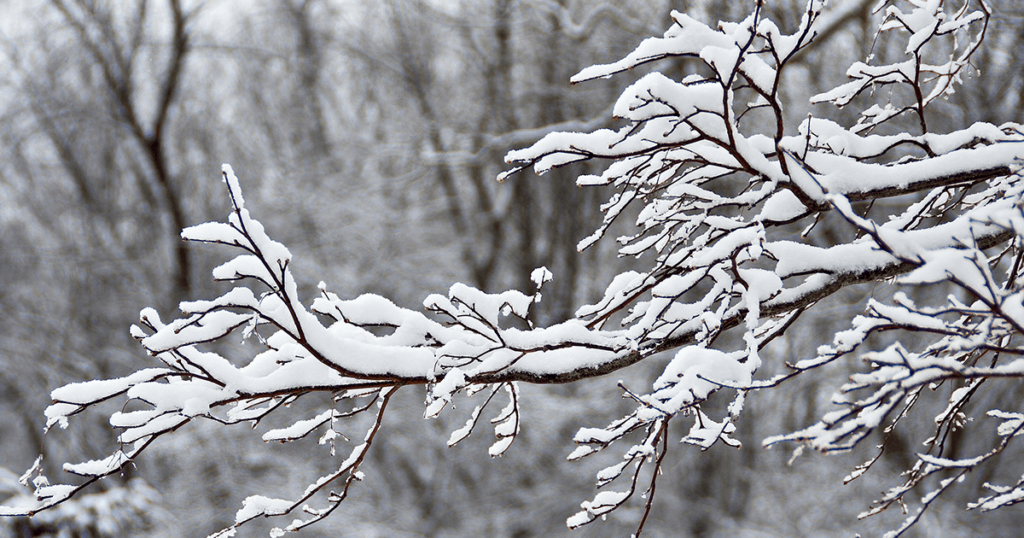
Winter’s first snowfall can evoke wonder even among the most jaded residents of cold-weather climates. Giles Whittell, a writer for The Times of London, brings that same sense of childlike delight to his book-length exploration of this wintry phenomenon. From the microscopic (what gives each snowflake its own unique shape?) to the gigantic (how do avalanches form?), Whittell blends science with historical anecdotes in this compelling and entertaining study of snow.
One January morning not long ago, the people of Aïn Séfra woke to a surprise. Snow had been falling since soon after midnight on the high ground around their town. In places it was a foot deep. School was postponed so that children could go out and play, and most of them did, because Aïn Séfra isn’t used to snow. It’s an oasis on the edge of the Sahara. Algiers is three hundred miles to the northeast. The Atlantic is almost as far away to the west. Snow is rare enough here to feel like a miracle, and as the children threw themselves headfirst down sand dunes transformed into white-crested waves, they screeched like wild macaws.
Along the crests the snow looked as if it belonged. Lower down it quickly thinned to nothing. The brave sliders of Aïn Séfra had about a five-second slide before they hit sand, then they’d run up and do it again. With each slide they turned the snow a pinker, sandier mush. By midmorning it was gone, but not to be forgotten. Video footage was shot and uploaded and was by lunchtime being broadcast in Brazil.
For those who felt that snow’s intense coldness and its slipperiness, it must have been definitive. It was what snow was like. The idea that you could have different types of it would probably have seemed beside the point. Snow either fell on you or it didn’t, and praise be, it had. You could even make a case for that day’s fall being the greatest snow on Earth, at least for as long as it lasted. The utilitarian philosopher Jeremy Bentham might have made this sort of case—the greatest possible happiness for the greatest possible number per flake.
I like this argument, but it has a couple of problems. First, if you claimed in print that Aïn Séfra’s snow was the greatest snow on Earth, you might get sued because “The Greatest Snow on Earth” is a trademark of the State of Utah, jealously defended since 1975. The second problem is suggested by the first: the idea of great snow isn’t simple. It’s contentious and the stakes are high.
The Aïn Séfra fall was not a meteorological orphan, but part of something much bigger. The main local ingredient was a long push inland by a storm system from the Atlantic. This was not unusual for the time of year, but it collided over the desert with freezing air drawn more than three thousand miles south from the Arctic, and this was a once-in-a-generation phenomenon. It was unusual for the distance traveled, the volume and temperature of the air, and how long it kept coming. On its way south this air had picked up moisture from the North Sea, supercooled the Alps, and smothered them with their heaviest snow in thirty years.
If not for this Alpine snow—which buried the glacier above Engelberg in Switzerland to a depth of five and a half meters and brought back frayed memories to a generation of old-timers who’d thought they would never see anything like it again—it’s possible that Aïn Séfra’s sideshow would not have attracted much attention. As it was, the arrival of snow in the Sahara became supporting evidence for excited theories of a big shift in weather patterns.
The French national weather service announced the retour de l’est, an exotic name for easterly winds from Siberia by way of the Black Sea and the Med that were colliding with the Alps from the east as the Atlantic system arrived from the northwest. Anglo-Saxon weather watchers were preoccupied with a high-pressure zone over Greenland that was forcing the jet stream into a northern detour before its arrival in Europe. And then there was the North Atlantic Oscillation, the NAO, an atmospheric seesaw powered by the Azores high and low pressure centered on Iceland. When both are weak, the NAO is negative and brings fewer storms to Europe from the Atlantic. When they are both strong, it’s positive and that means heavy weather.
In January 2018 the NAO was strongly positive. Ordinarily the precipitation expected as a result would be relatively warm, but the retour de l’est and the Greenland high were cooling it down. Hence the excitement, and the snow.
It came a meter at a time: mighty dumps, one after the other. Cold fronts queued up over the North Atlantic and then rolled over the British Isles and the Low Countries, right up to the watershed once crossed by Hannibal. And there they sat, emptying, like supertankers caught on a reef.
From Snow by Giles Whittell. Copyright © 2018 by Giles Whittell. Reprinted by permission of Atria, a Division of Simon & Schuster, Inc.

